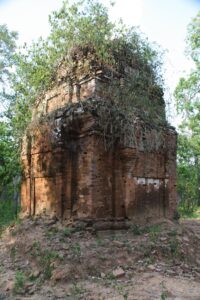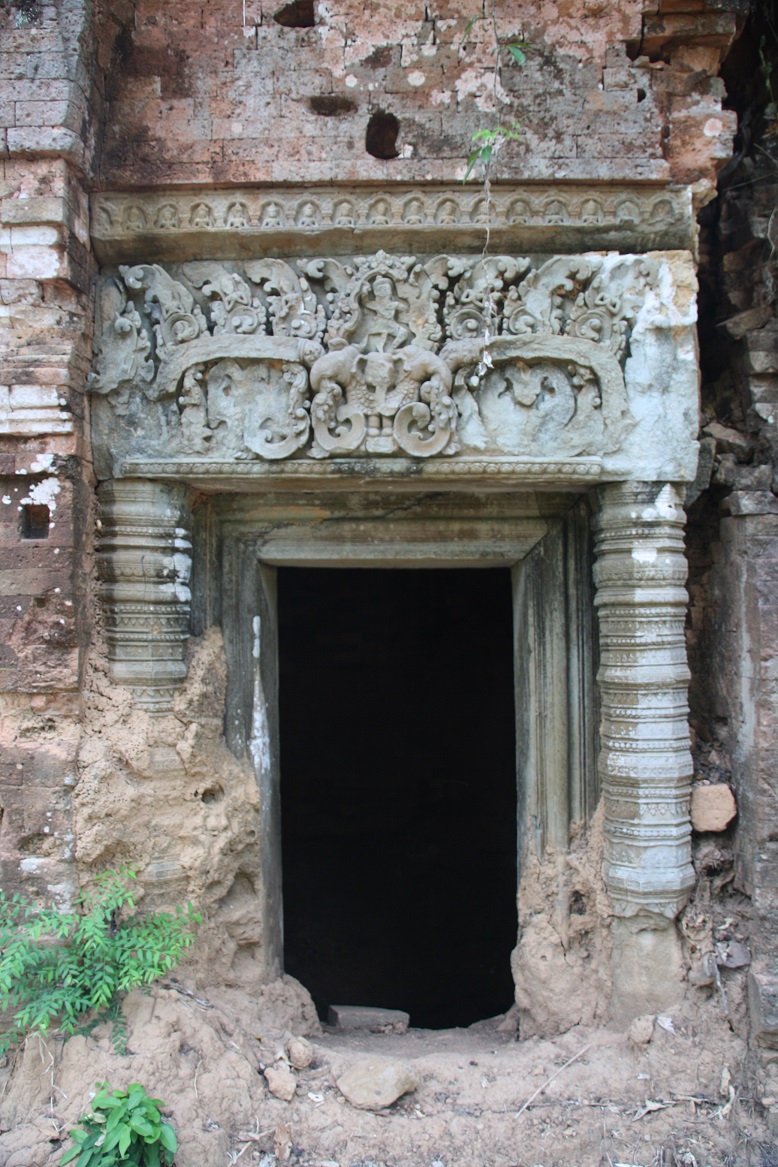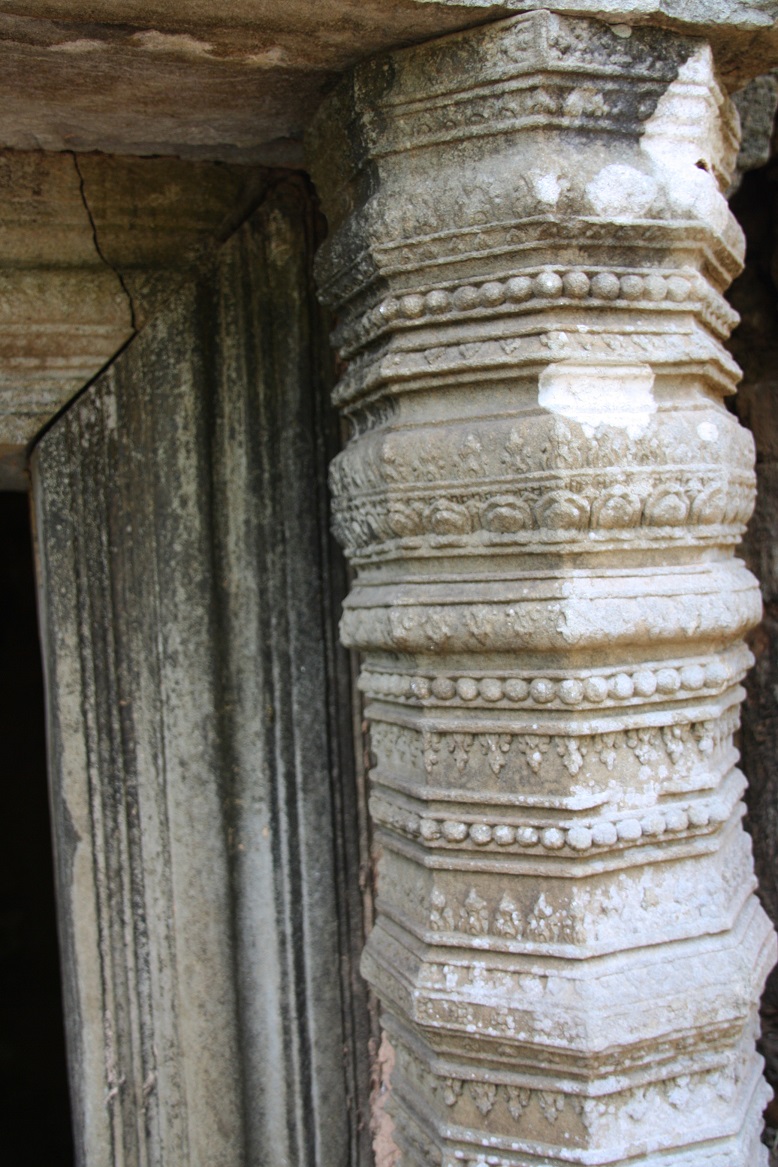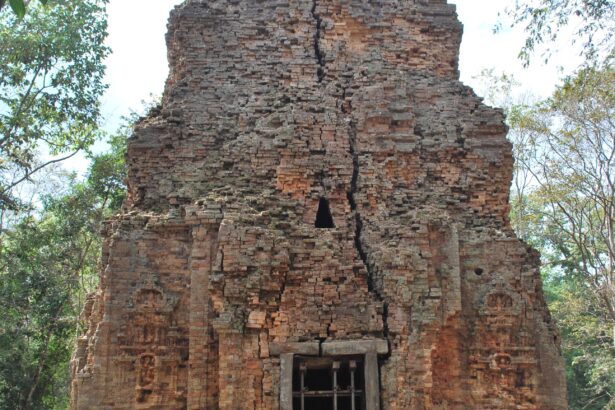
Chamreh Temple (ប្រាសាទចំរេះ) is one of the lesser-known yet historically rich structures within the ancient archaeological complex of Koh Ker, a historical tourism site located in the Preah Vihear Province of northern Cambodia. Also known as Oap Oun temple or Leak Neang Temple (ប្រាសាទឱបអូន ឬប្រាសាទលាក់នាង), it was made of brick and sandstone in the early Angkorian era during the reign of King Jayavarman IV, sits about 100 meters east of Prasat Lom Neang.
Chamreh Temple follows the Koh Ker style of architecture, which is distinct for its powerful, angular designs and brick construction. The temple showcases a simple yet solid layout, typical of many satellite shrines in the area. Oriented to the northeast, the temple is beautifully carved lintels, and built on a laterite base and a laterite library on the southeast. The temple is in better shape than others and still has an intact, albeit broken, lintel of Indra on Airavata. The temple is primarily built from brick, laterite and sandstone, with being used for foundation, structural and decorative elements. The temple has a pond to the east. Though time and nature have worn down much of the decoration, remnants of carvings and door frames still reflect the fine craftsmanship of the era.
Like many temples in Koh Ker, Chamreh was dedicated to Hindu deities, most likely Shiva, reflecting the religious orientation of the Khmer Empire during Jayavarman IV’s reign. The temple may have once housed a linga (a phallic symbol of Shiva), though it is no longer present. Chamreh Temple is in a ruined state, with portions of its walls and towers collapsed. Despite this, the remaining structure still exudes historical dignity and is a testament to the ingenuity of Khmer engineering. While not as prominent as Prasat Thom or Prang in Koh Ker, Chamreh Temple contributes to the comprehensive narrative of Khmer history, showing the spread and variety of temple construction during the 10th century.
The shrine is located between Prasat Chrap and Banteay Pir Choan, to the east of Rahal, but it points away from the baray with an eastern direction, indicating that it was created earlier and was likely part of the initial phase of Koh Ker building. Nestled in the dense forest of the Koh Ker complex, Chamreh is surrounded by natural beauty and is accessible via dirt paths. Its secluded position offers visitors a peaceful, contemplative environment away from more trafficked tourist routes.
Gallery
 Chamreh Temple or Oap Oun Temple © Beyondangkor.org
Chamreh Temple or Oap Oun Temple © Beyondangkor.org  Chamreh Temple or Oap Oun Temple © Beyondangkor.org
Chamreh Temple or Oap Oun Temple © Beyondangkor.org  Chamreh Temple or Oap Oun Temple © Beyondangkor.org
Chamreh Temple or Oap Oun Temple © Beyondangkor.org 


